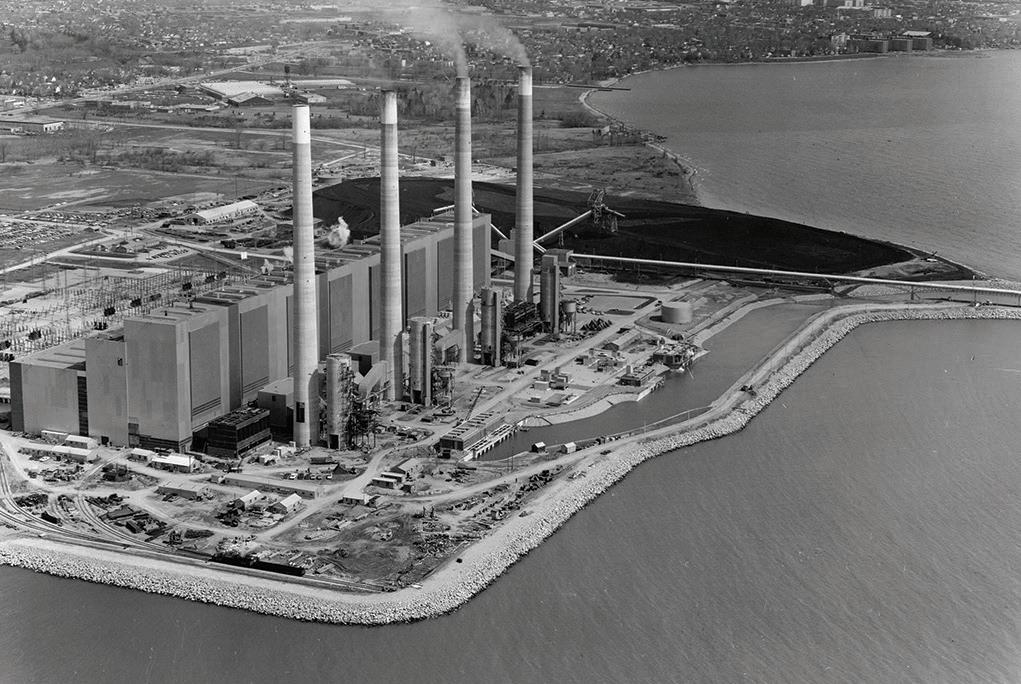
2 minute read
HISTORICAL BACKGROUND
THROUGHOUT THE CENTURIES
The Lakeview site has a diverse past, ranging from early Iroquois First Nations to French and English settlements and farming plots in the 1800s. There was significant military and industrial presence during WWII, including the production of large quantities of military small arms almost exclusively by women. The Lakeview Generating Station, Ontario Power Generation’s coal burning station, served as a familiar landmark along the Lake Ontario shoreline for decades. The area’s distinct history is recognized and will be built upon as part of the plans for Lakeview Village.
TRANSPORTATION 1804 - 1939 Lakeshore Road opened in 1804 followed by The Great Western Railway in 1855. TTC built a short line to transport workers from Long Branch to Small Arms Ltd.
EARLY INDIGENOUS 9000 BC - 1820 Three distinct periods: PaleoIndian, Archaic and the Woodland Period. Mississaugas of the New Credit Land Cessions Treaties in 1806 and 1820.


AVIATION 1915 - 1919 The site of the Long Branch Aerodrome, the first commercial air training airport and first aerodrome in Canada. It was also home to the first aviator training school for the Royal Flying Corps and later a cadet air and ground training school.

MILITARY 1891 - 1945 The Long Branch Rifle Ranges housed training grounds, barracks and staging areas for troops during WWI. During WWII, the former aerodrome served as a militia and army small arms training centre; Small Arms Ltd. produced over 900,000 rifles and over 126,000 Sten guns, with a mostly female workforce – a significant time for the changing role of women.


OPG COAL PLANT 1962 - 2005 The site of the former Lakeview Generating Station and its four 146-metre smokestacks known as “The Four Sisters”. A wellknown beacon and a place of smog and pollution for decades until its decommissioning in 2005.
INDUSTRIAL 1946 - 1974 Post-WWII, the site became the Canadian Arsenals production facilities, producing engine components, vehicle parts and engine shafts as well as arms for the Canadian Army. Later, housed an electronics manufacturer, water and waste treatment, and a coal plant.










